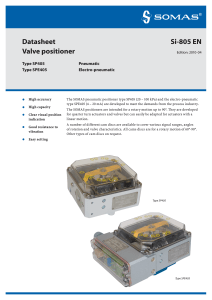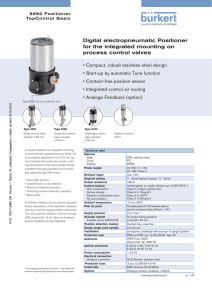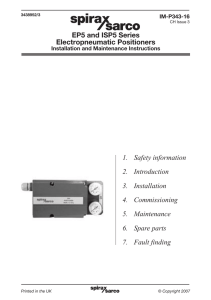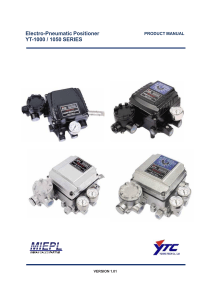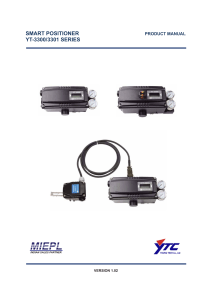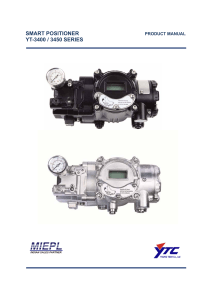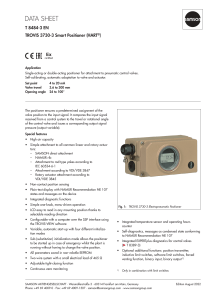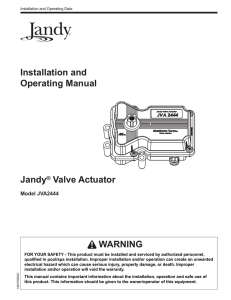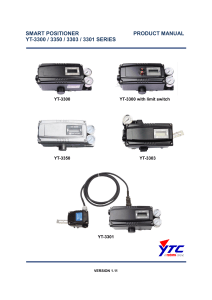V100E/V100EX Analog Positioner Calibration (with Gauges)
advertisement
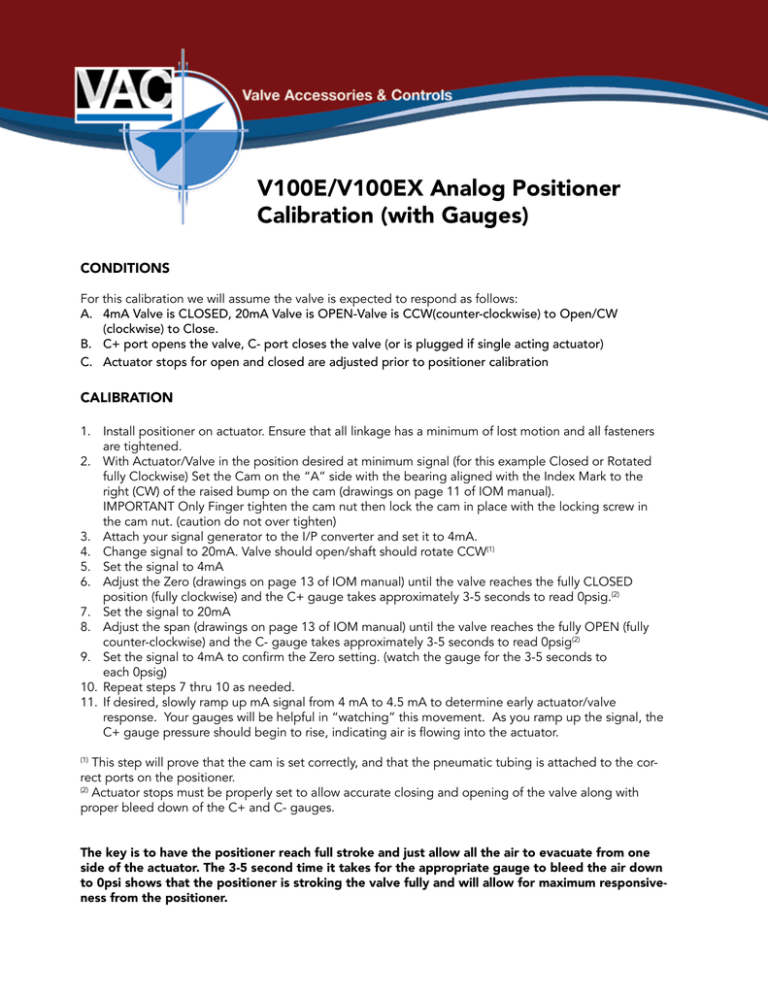
V100E/V100EX Analog Positioner Calibration (with Gauges) CONDITIONS For this calibration we will assume the valve is expected to respond as follows: A. 4mA Valve is CLOSED, 20mA Valve is OPEN-Valve is CCW(counter-clockwise) to Open/CW (clockwise) to Close. B. C+ port opens the valve, C- port closes the valve (or is plugged if single acting actuator) C. Actuator stops for open and closed are adjusted prior to positioner calibration CALIBRATION 1. Install positioner on actuator. Ensure that all linkage has a minimum of lost motion and all fasteners are tightened. 2. With Actuator/Valve in the position desired at minimum signal (for this example Closed or Rotated fully Clockwise) Set the Cam on the “A” side with the bearing aligned with the Index Mark to the right (CW) of the raised bump on the cam (drawings on page 11 of IOM manual). IMPORTANT Only Finger tighten the cam nut then lock the cam in place with the locking screw in the cam nut. (caution do not over tighten) 3. Attach your signal generator to the I/P converter and set it to 4mA. 4. Change signal to 20mA. Valve should open/shaft should rotate CCW(1) 5. Set the signal to 4mA 6. Adjust the Zero (drawings on page 13 of IOM manual) until the valve reaches the fully CLOSED position (fully clockwise) and the C+ gauge takes approximately 3-5 seconds to read 0psig.(2) 7. Set the signal to 20mA 8. Adjust the span (drawings on page 13 of IOM manual) until the valve reaches the fully OPEN (fully counter-clockwise) and the C- gauge takes approximately 3-5 seconds to read 0psig(2) 9. Set the signal to 4mA to confirm the Zero setting. (watch the gauge for the 3-5 seconds to each 0psig) 10. Repeat steps 7 thru 10 as needed. 11. If desired, slowly ramp up mA signal from 4 mA to 4.5 mA to determine early actuator/valve response. Your gauges will be helpful in “watching” this movement. As you ramp up the signal, the C+ gauge pressure should begin to rise, indicating air is flowing into the actuator. (1) This step will prove that the cam is set correctly, and that the pneumatic tubing is attached to the correct ports on the positioner. (2) Actuator stops must be properly set to allow accurate closing and opening of the valve along with proper bleed down of the C+ and C- gauges. The key is to have the positioner reach full stroke and just allow all the air to evacuate from one side of the actuator. The 3-5 second time it takes for the appropriate gauge to bleed the air down to 0psi shows that the positioner is stroking the valve fully and will allow for maximum responsiveness from the positioner.

